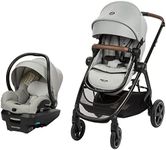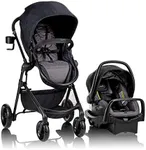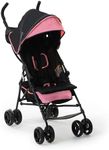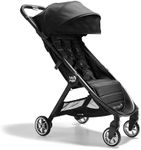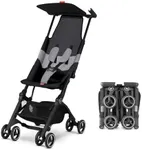Buying Guide for the Best Travel Stroller
Choosing a travel stroller can make your journeys with a child much easier and more enjoyable. The right stroller should be lightweight, easy to fold, and comfortable for your child, while also fitting your travel style—whether you’re navigating airports, city streets, or public transport. Before you start shopping, think about where and how you’ll use the stroller most often, and what features will make your trips smoother.WeightWeight refers to how heavy the stroller is when it’s fully assembled. This is important because a lighter stroller is easier to carry, lift into cars or overhead bins, and maneuver through crowded places. Travel strollers typically range from ultra-light (under 12 pounds), which are great for frequent flyers or those who need to carry the stroller often, to mid-weight (12-18 pounds), which may offer more features but are still manageable. If you’ll be carrying the stroller a lot or using public transport, go for the lightest option you can find that still feels sturdy. If you need more comfort or storage, a slightly heavier model might be worth it.
FoldabilityFoldability describes how easily and compactly the stroller can be folded for storage or transport. This is crucial for travel, especially if you’ll be dealing with tight spaces or need to quickly collapse the stroller at airport gates or on public transport. Some strollers fold with one hand, while others require two. The most compact strollers can fit in an airplane overhead bin, while others may need to be checked. If you travel by plane often, look for a stroller that folds very small and easily. If you mostly travel by car, a slightly larger fold may be fine.
Recline and ComfortRecline and comfort refer to how much the seat can lean back and how cushioned it is. This matters for your child’s comfort, especially on long outings or if your child naps in the stroller. Some travel strollers offer a deep or full recline, which is best for younger babies or frequent naps, while others have a more upright seat suitable for older toddlers. Consider your child’s age and whether they’ll need to nap on the go—if so, prioritize a stroller with a good recline and padding.
Canopy SizeThe canopy is the cover that shields your child from sun, wind, or light rain. A larger canopy offers better protection, which is important if you’ll be outdoors a lot. Some strollers have small, basic canopies, while others have extendable ones with extra panels or UV protection. If you’ll be in sunny or unpredictable weather, look for a stroller with a large, adjustable canopy. If you’ll mostly be indoors, a smaller canopy may be enough.
Storage BasketThe storage basket is the space under the seat where you can keep bags, snacks, or other essentials. For travel, having a decent-sized basket can make outings easier, but very compact strollers may have limited storage. If you need to carry a diaper bag or shopping, look for a stroller with a larger, easily accessible basket. If you pack light or use a backpack, a smaller basket may be fine.
ManeuverabilityManeuverability is about how easily the stroller steers and handles different surfaces. This depends on the wheel size, suspension, and overall design. Small wheels are lighter and more compact, good for smooth surfaces like airports or malls, while larger wheels and better suspension help on rougher terrain. If you’ll mostly be in cities or airports, a stroller with smaller wheels is usually enough. If you plan to walk on cobblestones, gravel, or uneven paths, look for better wheels and suspension.
Age and Weight LimitThe age and weight limit tells you the range of children the stroller can safely carry. Some travel strollers are suitable from birth with a fully reclining seat or car seat compatibility, while others are best for older babies and toddlers. Check the minimum and maximum weight or age recommendations to make sure the stroller fits your child now and for as long as you plan to use it.


